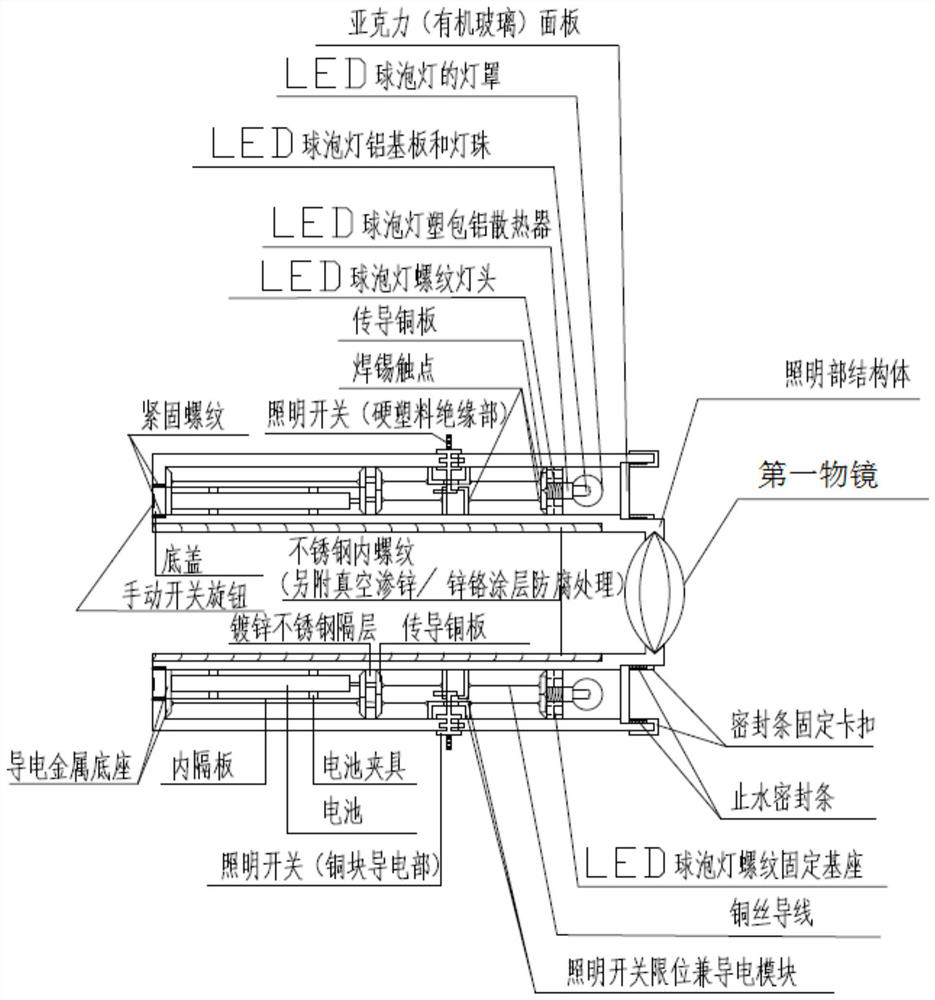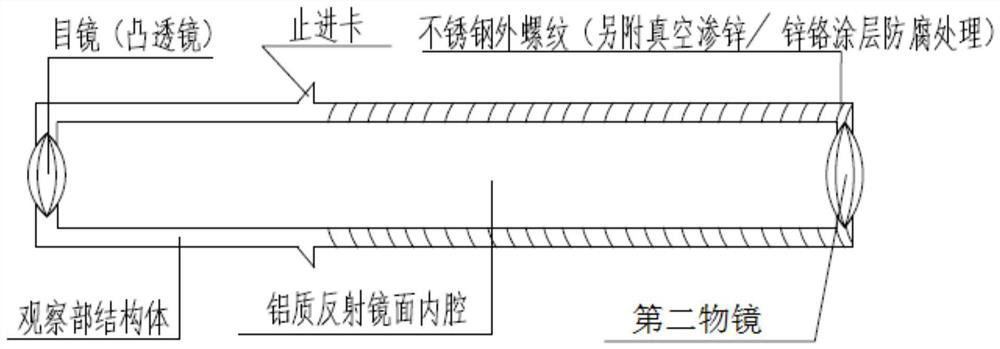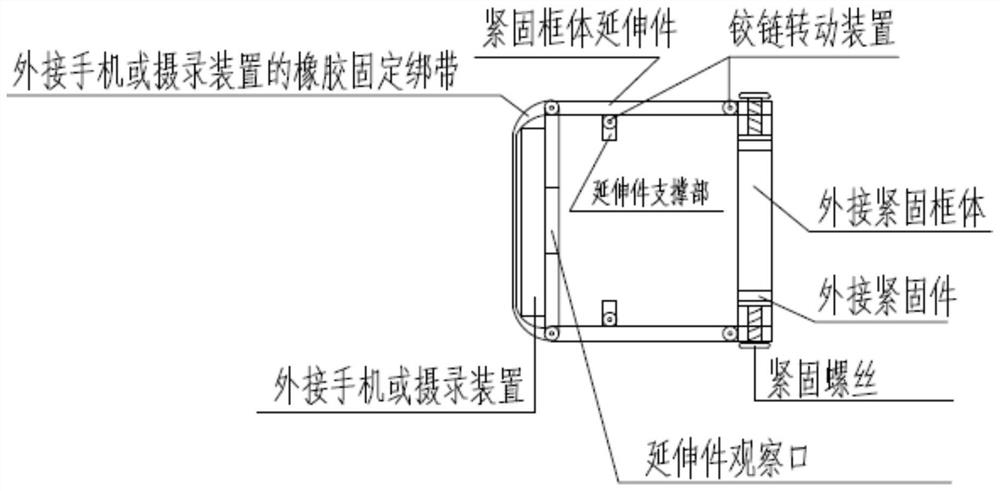Although this wheeled
robot has many observation and detection functions as mentioned above, it also has the following disadvantages: ①This type of
robot and its supporting equipment have a large weight and volume, making it difficult to carry and transport; ②This type of
robot and supporting equipment Assembling, wiring and debugging are required before formal operation and use, which requires a high degree of mastery of the
professional skills and theoretical knowledge of the operators; ③The structure of this type of robot and supporting equipment is complex, and it is an integration of
machine,
electricity and instrument Its price ranges from 5,000 yuan to tens of thousands of yuan according to the specific configuration. It is expensive, and it is currently only suitable for the detection and detection of pipeline facilities. The application area is narrow and there are not many application points, so its use The frequency is not high, and it only supports observation and testing on pipelines with equipment erection surfaces, and the maintenance, repair, calibration and calibration of this type of equipment need to be carried out by entrusting the instrument manufacturer or a third-party professional unit, and the above work cannot be carried out by itself. Additional maintenance and calibration costs are generated, which further reduces its economy; ④ The observation and detection functions of this type of robot mainly depend on the
control system and its observation, detection and evaluation
software. In case of
abnormality or failure, observation and detection activities cannot be carried out, so it is difficult to control the operation stability of the
control system of the equipment and the observation, detection and evaluation
software; ⑤ This type of robot only supports observation and detection on the basis of equipment erection surfaces , not suitable for vacated or suspended
working environmentIn the process of municipal
engineering construction, the main function of the UAV aerial camera is to take
aerial photography (including close-up, wide-angle and panoramic views, etc.) of the overall appearance of the project and the overall construction progress. And it is limited to taking photos and videos of specific objects at a specific angle at a
specific time point. Generally,
aerial photography is carried out in a sunny day with good
visibility, and in
severe weather such as heavy
fog, rain and
snow, and at night or in an environment with poor
visibility. It is usually not suitable for outdoor
aerial photography, which may easily lead to failure of UAV
signal transmission and reception, equipment damage due to
moisture, misoperation of equipment due to insufficient
visibility, collisions, and improper landing and other problems. Most
drone aerial photography devices are civilian aerial photography devices, and their aerial photography area and height (generally no more than 100m) are subject to the laws and regulations of the "Regulations on the Administration of Real-Name Registration of Civil Unmanned Aircraft" and the "Regulations on
General Aviation Flight Control"
Although the UAV aerial camera has the above functions and advantages, it also has the following disadvantages: ①According to the requirements of the above laws and regulations, the UAV needs to meet three prerequisites before aerial photography (including the operator has a
license, the UAV must Airworthiness,
flight plan needs to be declared), but these three conditions generally cannot be fully met, so usually the
drone aerial photography activities carried out on the
project site in the past are illegal photography, and serious cases will be investigated for legal responsibility, so it is generally not recommended to carry out unmanned aerial vehicles Human-
machine aerial photography; ② Civilian UAV aerial photography devices and their supporting equipment on the market vary according to specific configuration and performance. Generally, the price ranges from 2,000 yuan to 30,000 yuan, and the price of the main components exceeds 1,000 yuan. But in contrast, the application area of UAV aerial camera is narrow, and there are few application points. In addition, its use frequency is not high. ) and time period (only in
daytime, high weather conditions and high visibility) are limited, resulting in high cost of use, and the cost of equipment maintenance and parts consumption in the later period is also relatively large, making its overall economical Poor; ③The shooting quality of the UAV aerial camera and whether it can operate stably and normally depends on the main components such as its flight
control system, propulsion
system, aerial
remote control and
receiver, aerial pan / tilt, and aerial camera. Any failure or abnormal operation of any of them will cause the UAV aerial camera to be unable to carry out shooting activities, or even damage and
crash of the aerial camera. Therefore, in order to achieve the smooth shooting of the aerial camera, it is necessary to ensure the normal operation of each of the above-mentioned main components. Operation, which requires the user to be in place for daily maintenance and repair of the equipment, and to be clear about the operating status of the equipment and its main components, to understand the causes of various problems and failures, and to have the ability to troubleshoot and solve problems , which is difficult for ordinary people to master. Professionals with
professional skills and theoretical knowledge are required.
Assembly, wiring and debugging are required before formal operation and use. The requirements for human skills and knowledge are extremely high and it is difficult to get started. Large and difficult to operate; ④ UAV aerial camera is heavy and bulky, so it is not easy to carry and transport; It is carried out on the basis of the equipment erection surface, and it is not suitable for operations in confined and limited spaces. It is easy to cause shielding or
abnormality in the transmission and reception of the operation
signal of the
drone aerial camera, resulting in loss of control of the equipment
[0018] 3. In the actual application process of the above-mentioned existing illuminators and observers, the application surface is limited to varying degrees. For example, most observers are only suitable for
daytime or bright environment conditions, and the observation effect is not good at night or in dark environments. And it needs to be put into use and play a role when there is an equipment erection surface or erection conditions, and the application conditions are limited; among the same illuminators, the heat
radiation light source illuminators are only suitable for non-flammable and explosive places and the level of the installation position It is not common for all working conditions, and the gas
discharge light source illuminator is only suitable for normal temperature environment, usually 18 ℃ ~ 25 ℃, sensitive to starting current and
voltage stability (± 5%) , It is not suitable for rotating objects and application shortcomings, such as
thermal radiation light source and gas
discharge light source illuminator have short service life,
high energy consumption, high procurement cost and poor economy, and there are potential safety hazards in use. Restricted, etc. Most of the same observers have observation records that are only applicable to their own specific data and objects and are not universal. The observation and measurement function is single, and the
purchase cost of the observer is high, but the
frequency of use is not high, and the economy is poor. And it is only used for the observation of specific fields and objects, and lacks practicability. In addition, it has many conditions of use and is subject to relatively large constraints, such as conditions such as people,
mechanical equipment, and environmental conditions;
[0019] 4. The above-mentioned existing illuminator and viewer have large external outlines, complex structures, many components and accessories, large volume, difficult to carry, and
heavy weight (only for viewers), which will easily cause difficulty in carrying and transportation and cumbersome
assembly. Moreover, they are highly professional, difficult to master and use, and difficult and professional to maintain in the later stage, which affects the popularization, application and promotion of the above-mentioned existing illuminators and observers;
[0020] 5. The service life and durability of the above-mentioned existing illuminators and observers are limited, especially the
thermal radiation light source, gas
discharge light source and
semiconductor light source illuminator have a clearly
limited service life, usually
ranging from 1000 hours to 50000 hours, Once the service life is reached, there will generally be failures that make it unusable. At this time, a new illuminator must be purchased to update it before it can continue to be used. The routine use of the
detector can be determined. All kinds of observers generally need to be maintained and calibrated every six months or once a year. Except for the
air volume observer, the rest of the observers are generally optical precision instruments, such as levels, theodolites, and total stations. Instruments and electromechanical integrated instruments, such as CCTV pipeline robots and UAV aerial cameras, these observers sometimes need to replace some
consumables and wearing parts during maintenance and equipment calibration, such as updating observation cloth strips and Glass tubes, updated levels,
theodolite and other instruments and weighing instruments, etc., updated CCTV pipeline robots and important electrical components and lenses of UAV aerial cameras, etc., and the replacement operation and maintenance need to be handled by a third-party professional organization, and the above-mentioned observers The maintenance cost is relatively high, and it cannot be operated and replaced by itself. If the maintenance and equipment calibration are not performed according to the requirements on a regular basis, it is easy to cause equipment operation failure and
distortion of observation measurement accuracy, which directly affects
actual use and effectiveness;
[0021] 6. The structures and components of the above-mentioned existing illuminators and observers are quite different and differ greatly, and their operating mechanisms and use requirements are also different, which has caused the above-mentioned existing illuminators and observers to operate stably. Features and control points vary
The stable operation of the above-mentioned types of illuminators depends on the stability of important electrical components such as lamp beads, filaments, conductive parts, radiators, ballasts, and power supplies, and the stable operation of the above-mentioned various types of observers depends on the stability of various types of observers. There are many and complicated components of various observers, some of which involve multiple optical components, such as lenses, instruments, level dials, etc., and some of which involve structural bodies, such as observation cloth strips, glass tubes, etc. Mechanical, electrical, and instrumental components, such as CCTV pipeline robots involving anti-overturning crawlers, lenses or related testing instruments, cable reels, and control systems, such as tablets, laptops, or special industrial controllers, and equipped with (without) Wire
connection control, real-time display and storage of high-definition detection video, whether it is the illuminator or the observer, as long as any of the above-mentioned components fails, it will easily lead to unstable operation or even breakdown of the equipment, which will cause serious negative effects on
actual use and effectiveness influences
To ensure the stable operation of the above-mentioned existing illuminators and observers, it is necessary to spend a lot of manpower,
material resources and financial resources to pay attention to and control the stable operation elements and control points of the illuminators and observers, but the above-mentioned elements and control points are not ordinary and simple Most of them are mechanical, electrical,
instrument control and other important parts that are highly professional and difficult to control, which is almost impossible for users who lack professional theoretical knowledge and practical operation experience. It is very difficult, so the long-term stable operation of the illuminator and observer cannot be guaranteed
[0022] 7. Among the above-mentioned existing illuminators and observers, observers involving the integration of electromechanical instruments, such as CCTV pipeline robots and UAV aerial cameras, must go through the necessary procedures in accordance with laws and regulations and the provisions of relevant competent departments before they are put into use in the project. Procedures and filing, for CCTV pipeline robots, before the pipeline inspection, it is necessary to go through the formalities of road closure or temporary
land occupation in the construction inspection area. If there is
water flow or
silt garbage in the pipeline, it is also necessary to go through the procedures of pipeline drainage and pipeline desilting , and collect pipeline drawings and installation materials in advance, and simultaneously formulate and
record CCTV pipeline inspection plans, safety plans and emergency measures. Once any of the above items are violated or the preparations are not in place, it is easy to be held accountable for violations
However, there are certain uncertainties and risks in working conditions such as limited spaces and dark environments, especially in the field of municipal
engineering, whether it is underground tunnels,
underground pipeline facilities (such as rainwater pipes, etc.) Wells,
water intake pump rooms, etc.) and other municipal projects have limited space and dark environment conditions to varying degrees, and toxic and harmful gases (such as
hydrogen sulfide,
ammonia,
methyl sulfide) often exist in these limited spaces and dark environments
Alcohol, etc.),
oxygen deficiency (such as
carbon monoxide or
carbon dioxide exceeding the standard) or
high humidity and strong
corrosion environment (such as
sewage sludge environment with various corrosive odors), once the above-mentioned existing illuminators and observers are placed in Working in such environmental conditions can easily cause
corrosion damage to the equipment body,
moisture damage, and even short-circuit and
burnout of electrical components. If it is higher, it is more likely to cause damage to the above-mentioned existing illuminator and observer equipment body and components and frequent failures.
Electric current and
heat energy will be generated. When
electric current and
heat energy coexist in the same environment with
high concentration of toxic and harmful gases (such as
hydrogen sulfide,
ammonia, methyl mercaptan, etc.) or
oxygen deficiency (such as
carbon monoxide or
carbon dioxide exceeding the standard) and a certain concentration of
oxygen, It is easy to stimulate chemical reactions and cause explosion or
deflagration, which will not only cause devastating damage to the illuminator and observer equipment itself, but also bring disaster to the surrounding environment, personnel and property, etc. The negative
impact and loss caused by it are immeasurable
In addition, in a limited space and a dark environment, especially in the presence of high concentrations of toxic and harmful gases, lack of oxygen or
high humidity and strong corrosive
water vapor, the observers (especially CCTV pipeline robots and UAV aerial cameras) will be affected. The normal operation and control of the electromechanical instrument
system has a great
impact, mainly reflected in the shielding or failure of the radio
remote sensing control signal, the thick water mist attached to the viewing port lens, which makes it impossible to clearly observe and
record, etc.
 Login to View More
Login to View More  Login to View More
Login to View More 


